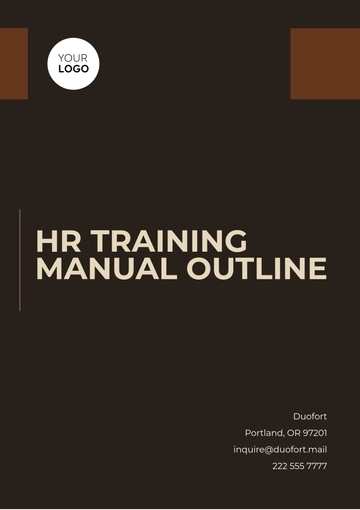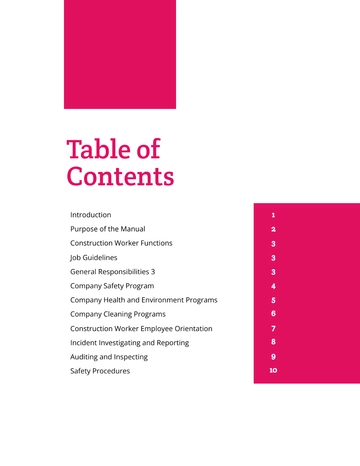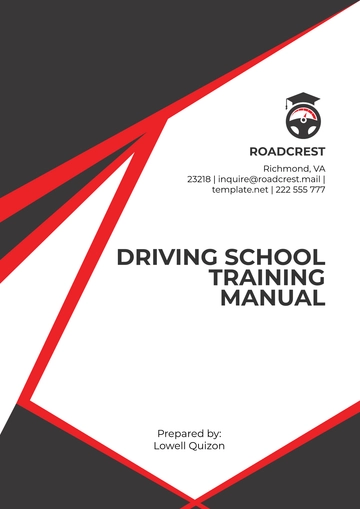Free Car Wash Training Manual

I. Introduction
A. Purpose of the Manual
This Car Wash Training Manual is designed to provide comprehensive training for all employees of [Your Company Name], ensuring consistent and high-quality service. This manual serves as a guide for understanding operational procedures, safety protocols, customer service guidelines, equipment maintenance, and eco-friendly practices. By following this manual, employees will not only enhance their skills but also contribute to the overall success and reputation of [Your Company Name]. The information contained herein aligns with industry standards and emerging technologies of 2050, making it an invaluable resource for both new hires and seasoned employees.
B. Importance of Consistency
In the highly competitive car wash industry of 2050, providing consistent service quality is paramount to maintaining the reputation and success of [Your Company Name]. Consistency ensures that every customer receives the same excellent service, irrespective of location or staff member. By adhering to the guidelines outlined in this manual, employees can confidently deliver the expected results, avoiding mistakes that could lead to customer dissatisfaction or equipment damage. Furthermore, consistent practices help streamline operations, reduce waste, and improve efficiency, which ultimately contributes to higher profitability for the company. Consistency also builds trust with customers, fostering loyalty and repeat business, which are crucial for long-term success.
II. Safety Guidelines
A. General Safety Rules
Ensuring the safety of both employees and customers is the top priority at [Your Company Name]. Employees must comply with the following general safety rules at all times:
Personal Protective Equipment (PPE): Employees must wear appropriate PPE, including gloves, safety glasses, and waterproof aprons when handling chemicals or cleaning solutions. It is important to replace worn-out PPE regularly to maintain a high standard of protection.
Slip Hazards: Wet floors are a constant hazard in a car wash setting. Employees should place warning signs around areas prone to slipping and ensure the workspace is clean and dry whenever possible. All employees must be vigilant about keeping the workspace free of debris, as this can significantly reduce the risk of accidents.
Chemical Safety: All chemicals used must be stored in their original containers and labeled correctly. Employees should familiarize themselves with the Material Safety Data Sheets (MSDS) for each chemical used. This knowledge is crucial in case of accidental exposure or spills. Employees should avoid mixing chemicals unless specified in the manual, as it may result in harmful reactions.
B. Equipment Safety
Car wash machinery and tools in 2050 are advanced and efficient, but they can still pose risks if not handled properly. Key safety rules include:
Regular Maintenance: All equipment should undergo a maintenance check once every [30] days. Employees must report any malfunctioning equipment immediately to prevent accidents and ensure the safety of everyone on-site.
Emergency Shutdown Procedures: Each staff member must familiarize themselves with the emergency shutdown procedures for all equipment. In the event of a malfunction, employees should prioritize their safety by using the emergency stop features before attempting repairs. Regular drills should be conducted to ensure all employees are prepared for emergencies.
Training Requirements: Only certified personnel are allowed to operate certain machinery, such as automated conveyor belts, high-pressure jets, and robotic cleaning arms. Certification programs should be regularly updated to include new technologies and best practices in the industry.
C. Customer and Vehicle Safety
In addition to safeguarding the well-being of employees, it's essential to ensure that customers and their vehicles are treated with the utmost care:
Customer Zones: Customers should remain in designated waiting areas during the wash process to avoid accidents near the machinery. Clear signage should be placed to guide customers to these areas.
Vehicle Checks: Employees must perform an initial inspection of the vehicle for any pre-existing damage, noting dents, scratches, or broken parts before starting the wash. Any findings should be communicated to the customer to avoid liability. Detailed inspection logs should be maintained for future reference.
Securing Loose Objects: Employees should ensure that all loose objects inside the customer’s vehicle are secured or removed before starting the wash, as these can cause damage during cleaning. A brief reminder to customers about securing their belongings can help minimize risks.
III. Car Wash Process
A. Pre-Wash Procedures
1. Vehicle Inspection
Before washing a vehicle, an initial inspection should be carried out by the staff. This includes checking the exterior for existing damage and asking the customer to remove or secure any accessories or loose items inside the vehicle.
Checklist:
Examine tires, mirrors, and antennae for damage.
Ensure windows and sunroofs are properly closed.
Inform the customer of any pre-existing damages. Documenting these findings can protect both the company and the customer in case of disputes.
2. Customer Communication
Clear communication with the customer is critical before starting the wash. Employees should discuss the desired service package, explain any promotions, and confirm the cost before proceeding. Effective communication fosters trust and satisfaction.
Service Explanation: Offer to explain the available wash packages, from the basic exterior wash to premium detailing services. Ensure the customer understands what each service entails and confirm any special requests they may have. Providing a brochure or digital display of services can enhance customer understanding.
B. Exterior Wash Process
1. Pre-Soak and Foam Application
The pre-soak process involves applying an environmentally friendly, water-based detergent foam to the vehicle to break down dirt and grime. The foam, generated using advanced 2050 technology, clings to surfaces, loosening contaminants for easier removal.
Duration: Allow the foam to sit on the vehicle for [5] minutes before rinsing. Employees should use this time to ensure the area around the wash station is clear of hazards.
Eco-Friendly Detergents: At [Your Company Name], only biodegradable detergents are used to minimize environmental impact. These detergents are specially formulated to be effective while ensuring safety for both the environment and vehicle surfaces.
2. High-Pressure Rinse
After the foam has lifted dirt, a high-pressure water rinse will remove the bulk of grime. This step uses the latest in pressure washing technology, reducing water consumption while maximizing cleaning power.
Water Pressure Settings: Ensure the water pressure is set between [1,500] and [2,000] PSI to avoid damaging the vehicle’s paint or trim. Staff should regularly monitor and adjust pressure settings based on the vehicle's condition.
Spot Checks: After rinsing, check for any stubborn spots or areas missed by the foam, using a soft brush if needed. Employees should also be trained to recognize when additional pre-soak may be necessary for heavily soiled vehicles.
3. Robotic Wash System
With automated robotic wash systems of 2050, the car washing process is both efficient and thorough. The robot arms gently scrub the car with advanced microfiber brushes that adjust pressure based on the vehicle’s surface.
Monitoring: Operators must supervise the process to ensure the robotic system is functioning correctly and address any areas the robot may have missed manually. Staff should be trained to recognize signs of malfunction in the robotic system.
C. Drying and Detailing
1. Drying Techniques
The final stage of the wash is the drying process, which prevents water spots and streaks. [Your Company Name] uses a combination of air dryers and manual towel drying to ensure a spotless finish.
Air Dryers: Advanced turbo dryers circulate air at [200] mph to remove up to [95%] of water. Staff should position dryers strategically to optimize airflow across the vehicle's surface.
Towel Drying: Employees should follow up with a soft, microfiber towel for detailed hand drying, especially around windows and mirrors. Proper techniques in towel drying help prevent scratches and streaks.
2. Additional Detailing Services
[Your Company Name] also offers specialized detailing services as part of its premium packages. Detailing may include waxing, polishing, and tire shine treatments:
Wax Application: High-quality, eco-friendly wax should be applied evenly using an orbital buffer to protect the paint and enhance shine. Staff should be trained in proper application techniques to achieve an even coat.
Interior Detailing: Vacuuming, dashboard polishing, and upholstery cleaning should be offered as part of premium packages. Proper training on cleaning materials and methods can significantly improve service quality.
IV. Equipment Maintenance
A. Regular Cleaning and Inspection
Maintaining the longevity and efficiency of car wash equipment is crucial for uninterrupted service. Employees are responsible for daily, weekly, and monthly maintenance checks as outlined below:
1. Daily Maintenance
Rinse Equipment: All nozzles, brushes, and hoses should be rinsed with clean water at the end of each day to prevent soap build-up. This practice not only extends the life of the equipment but also ensures optimal performance.
Foam Gun Calibration: The foam gun system must be recalibrated daily to ensure consistent detergent application. Employees should record calibration data for review and adjustments if needed.
2. Weekly Maintenance
Lubrication: All moving parts, including conveyor belts and robotic arms, must be lubricated once a week to avoid mechanical issues. Employees should use only the recommended lubricants specified by the manufacturer.
Water Filtration System: The filtration system should be checked weekly for clogs and cleaned if necessary to maintain optimal water pressure and quality. Keeping filters clean is essential for the efficient operation of the car wash.
3. Monthly Maintenance
Full Inspection: Once a month, a thorough inspection of the car wash system should be performed, including all electronics, to detect any signs of wear or malfunction. A report should be submitted to the maintenance manager for review. This proactive approach helps prevent costly repairs and downtime.
Replacement Parts: Consumable parts, such as microfiber brushes, should be replaced monthly or as needed to maintain the integrity of the wash. Keeping an inventory of spare parts can streamline this process.
V. Eco-Friendly Practices
A. Water Conservation
Given the global focus on environmental sustainability in 2050, [Your Company Name] emphasizes the importance of conserving water. All car washes should aim to minimize water use while maintaining service quality:
Recycling Systems: The car wash is equipped with an advanced water recycling system that filters and reuses up to [80%] of water used in each wash. Staff should be trained in the operation of these systems to maximize their effectiveness.
Low-Water Rinse: High-efficiency water jets consume [30%] less water compared to traditional systems while still providing thorough rinsing. Employees must regularly check that these systems are functioning properly.
B. Chemical Usage
Only certified, biodegradable chemicals are used in the car wash process at [Your Company Name]. This reduces the impact on local water systems and aligns with global sustainability goals.
Chemical Dilution: Employees must follow the precise chemical dilution instructions to avoid waste and minimize the risk of pollution. Regular training sessions on proper dilution techniques should be conducted to reinforce best practices.
Green Seal Certification: Ensure all chemicals used have a Green Seal certification to guarantee their eco-friendliness. Employees should be familiar with the certifications of the products used to better inform customers about their choices.
VI. Customer Service and Experience
A. Customer Interaction
At [Your Company Name], the customer experience is as important as the quality of the wash itself. Employees are trained to deliver friendly, professional, and personalized service:
1. Greeting Customers
Warm Welcome: All customers should be greeted with a smile and a warm welcome as soon as they arrive. Employees should make it a point to introduce themselves and offer assistance with service selection.
Personalized Attention: Taking the time to ask customers about their specific needs can enhance the overall experience. Training staff to recognize and respond to customer cues is essential in providing exceptional service.
2. Handling Complaints
Not all customer experiences will be perfect. How complaints are handled can make or break the company’s reputation. Employees must follow these steps when addressing complaints:
Listen Carefully: Allow the customer to express their concern without interruption. Acknowledge their feelings and let them know their feedback is valued.
Acknowledge the Issue: Assure the customer that the issue will be resolved promptly, and thank them for bringing it to your attention. Transparency is key in these situations.
Find a Solution: Offer immediate solutions where possible, such as re-washing the vehicle or providing a discount for the next visit. Employees should be empowered to make decisions that enhance customer satisfaction.
B. Customer Loyalty Programs
To build lasting relationships, [Your Company Name] offers customer loyalty programs, rewarding frequent customers with discounts and free services:
Points System: Customers earn [1] point for every wash. After accumulating [10] points, they are eligible for a free basic wash. This system encourages repeat visits and increases customer retention.
Membership Plans: Premium members pay a flat monthly fee for unlimited washes, which can increase customer retention and satisfaction. Offering tiered membership options can appeal to a broader range of customers, allowing them to choose a plan that best fits their needs.
- 100% Customizable, free editor
- Access 1 Million+ Templates, photo’s & graphics
- Download or share as a template
- Click and replace photos, graphics, text, backgrounds
- Resize, crop, AI write & more
- Access advanced editor
Train your staff effectively with the Car Wash Training Manual Template from Template.net. This editable and customizable template provides comprehensive training guidelines for new employees. Use our Ai Editor Tool to personalize it and ensure consistency in service quality. Enhance your team’s skills—create a detailed training manual today!





























